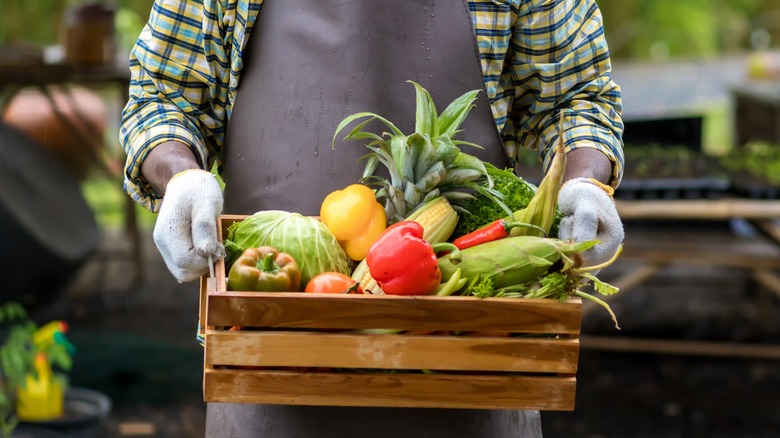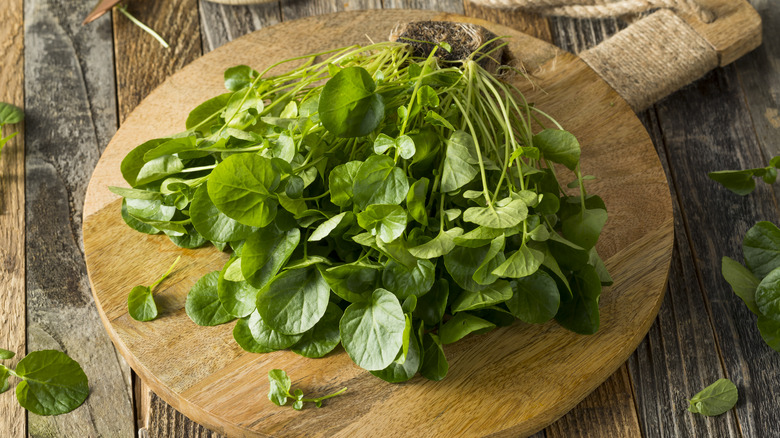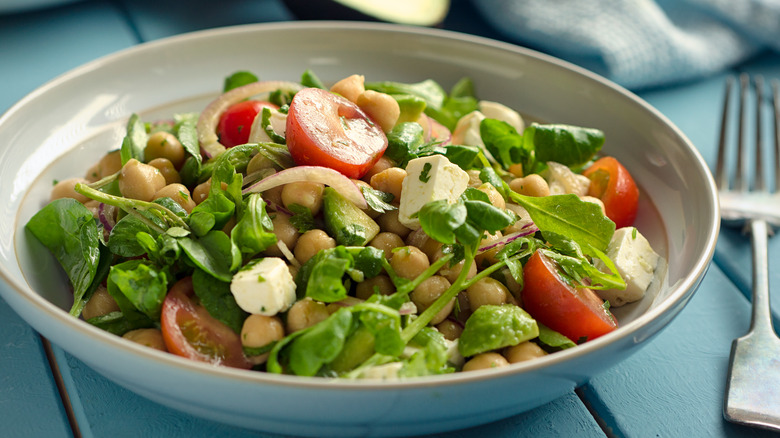The Most Nutrient Dense Vegetable Isn't What You'd Expect
Any medical professional or registered dietitian would advise you to eat your vegetables. Sure, you might have hated them as a kid, but you know that vegetables are filled with plenty of vitamins, minerals, and fiber to keep you healthy and prevent chronic disease. According to the U.S. Department of Agriculture, vegetables can also help you manage your weight because they are naturally low in calories.
Which vegetables give you the biggest nutritional punch per calorie? A 2014 article in Preventing Chronic Disease looked at 41 fruits and vegetables that are nutritional powerhouses (such as kale, broccoli, cauliflower, watercress, and Brussels sprouts). The study focused on the nutritional content of a 100-calorie serving of each, ranking them based on their percentage of the daily value of key nutrients like potassium, fiber, calcium, iron, folate, zinc, and vitamins. Interestingly, nutritional juggernaut kale didn't make the top third of the list, and broccoli, cauliflower, and Brussels sprouts scored below kale. The vegetable that has the most nutrients per 100 calories might surprise you.
The nutrition in watercress
Watercress scored 100 on the nutrient density classification. A 100-gram serving of watercress (about 3.5 ounces) has 11 calories and 2 grams of protein. You'll get about half your daily recommended vitamin C, more than 100% of your recommended vitamin A, and twice your recommended vitamin K in that same serving of watercress. Vitamin K can help protect your bones against osteoporosis and helps with blood clotting after you cut your skin (via Cleveland Clinic).
Watercress will also give you 120 milligrams of calcium and 330 milligrams of potassium. Potassium helps regulate your blood pressure and keep your sodium levels balanced (via Medical News Today). In addition, watercress has 1,910 micrograms of beta carotene, which is an antioxidant that can reduce cell damage and oxidative stress in your body (via Healthline). The antioxidants in watercress can also benefit your heart by lowering your blood pressure and reducing your risk of heart attacks or strokes.
Adding watercress to your diet
According to Longevity Technology, watercress is a cruciferous vegetable similar to Brussels sprouts, broccoli, and kale but relegated to garnish status in the past. It has a slightly peppery taste that can help season pasta dishes and casseroles. If you like scrambled eggs, watercress can help add flavor and extra nutrition. Watercress can also be whipped up with powerhouse fruits like strawberries or blackberries for a nutrient-rich smoothie. Rather than make pesto with basil, substitute watercress for a kick of vitamin K.
Even though watercress has a peppery or bitter taste, you can tame it if you cook it in butter or oil (via Today). Add a few cups of wilted watercress to a few radishes, red onion, and hard-boiled eggs for a warm powerhouse salad. Make a dressing by cooking some bacon, then adding some cider vinegar, sugar, salt, and pepper. If you can't find watercress in your local grocery store, you can grow it easily at home. Watercress flourishes if you place it in the sun and give it lots of water.



